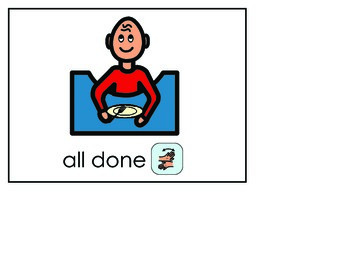

This phase teaches the child how to answer the question “what do you want” using the PECS notebook and pictures. Though not necessarily a true phase, there is also training on how to help a child use adjectives and other words to expand his sentences at this point. That’s not the case for all children, but I definitely have seen some success with this for some children. At this point, I have seen some children with autism begin to speak the message along with the adult. When the child takes that strip and hands it to the adult, the child is helped to point at each picture as the adult says the words out loud. The child is required to place the “I want” picture on the strip along with the picture of what they want. There is also a separate strip of Velcro that detaches from the book. The picture choices are placed on the front of a notebook with Velcro along with a picture that says “I want”. Sentence StructureĪt this point, the program teaches the child how to form a simple sentence. Just like the other stages, this stage describes different roles for each of the two adults and shows you exactly what to do to help the child learn how to choose the correct picture. Typically, the second picture is something that the child does not want so that he understands that he really does need to look at the pictures. The child must find the picture that he wants and give that to the adult. Picture DiscriminationĪt this point in the program, the child will be given two pictures to choose from. The child learns that he needs to be persistent to communicate and can’t give up. In other attempts, the picture will be right next to the child but the person who is holding what he wants will start walking away. Some of the time, the picture will be moved farther away from the child and he’ll have to go get it. In this phase of PECS, the child is taught to be more persistent with his communication attempts. He’s not choosing the picture he wants from a selection, he’s just practicing the idea of handing a picture and getting what he wants. For the first phase, the child only has one picture in front of him.

Like I said before, this is a very specific program with very specific instructions.Įach adult in this situation has an important role and has instructions on what to do. For this phase, there is one adult in front of the child who is holding what the child wants, and another adult behind the child guiding the child’s hand and arm to help him pick up the picture and give it to the first adult. In the first phase of PECS, the child will learn that if they hand an adult a picture, they will get what they want in return. Here is a basic overview of what those phases involve. The PECS System is broken down into six phases that are strictly controlled in terms of how they are implemented. The authors note that the “observed gains in speech production may vary across individuals and, if they do occur, are typically small in magnitude” This review found no evidence that AAC intervention hinders speech production in children with autism or PDD-NOS and suggests that AAC may result in increased speech production.

looked at all of the research on augmentative and alternative communication (AAC) in general in 2008 and made this statement: While the research is still unclear on whether PECS specifically will lead to better speech output (talking) for children with autism, Schlosser, R. Findings also suggested PECS may be beneficial, at least in short-term effects, in promoting speech in children with a specific developmental profile (i.e., low joint attention, low motor imitation, high object exploration). A meta-analysis in 2010 found that PECS resulted in small to moderate effects for improving communication skills, suggesting that PECS has promising effectiveness in improving communication outcomes in children with autism spectrum disorder.


 0 kommentar(er)
0 kommentar(er)
